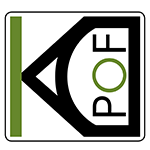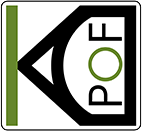KDPOF and Funzin Sign Partnership Agreement

KDPOF has signed a partnership agreement with the South Korean software development company Funzin. The goal is to work jointly on high-speed gigabit network products using Plastic Optical Fiber (POF) for automotive electronics and home networks. We will develop network applications for cars, in-home delivery for high-speed Internet, and Internet TV (IPTV).
Funzin supplies 5G frequency verification solutions to major domestic carriers. Founded in 2006, the company also provides a big data solution that combines ADAS for smart cars and machine learning. In 2019, Funzin introduced a fusion solution with driver face recognition and drowsiness detection. “As the volume of data in automobiles increases, the application of POF-based network technology will expand,” stated Kim Jung-Hoon, Vice President of Funzin.
KDPOF offers optical communication technology based on Plastic Optical Fiber (POF) instead of copper wire or glass fiber. It solves the electromagnetic issue with copper cables and overcomes the disadvantages of inflexible glass fiber optics. POF-based converters offer high reliability and ultra-fast data transfer capability. In addition, it improves fuel economy for vehicles. Major components such as cables, converters, and connectors making up a POF network are cheaper and more flexible than conventional optical communication facilities. As a result, POF is evaluated as next-generation network technology with excellent value for investment cost and verification cost.
Autonomous driving and driver assistance system (ADAS) features have been adopted as main preferences in vehicles, with the automotive network evolving to Ethernet. This is to connect various sensors and central control devices efficiently. In line with this trend, demand for electronic cables is expected to surge.
In addition to automotive applications, home networks also rely on the optical network backbone. It can be connected to IPTV set-top boxes and Wi-Fi APs. As the demand for high-speed Internet grows, its scope of use continues to increase.



